The Imagination Station
A custom experience designed to delight two students at the Hartford Regional Autism Program.
CHALLENGE
Impact Design is a course with one mission: design for delight. We were paired with Tyler and Zeke,* two autistic students at the Hartford Autism Regional Program (HARP). Our challenge was simply to create something that would bring them delight.
*Names have been changed to protect their privacy. I was granted permission to use images from HARP.
OUTCOME
- We learned about autism and the psychology of delight, conducted observations at HARP, and talked with Jessica (the director of HARP) to understand Tyler and Zeke better.
- We focused on their shared love for art to create three prototypes and a final solution
- The Imagination Station is a customizable, private space that allows both Tyler and Zeke to create in their own ways.
PROJECT INFO
Team
Me (designer)
Maxine Perroni-Scharf (designer)
Winston Wang (designer)
Cindy Yuan (designer)
Skills
Accessible design
Empathy building
Physical prototyping
Designing for delight
Timeline
7 weeks (2019)
BACKGROUND
Meet Tyler and Zeke
Our group was one of the few paired with two HARP students, adding an extra challenge. Our professor instructed us to design a single solution that would bring delight to both students (rather than two different solutions).
We would have to find some common ground for a shared delight experience, and so started off by getting to know Tyler and Zeke better.

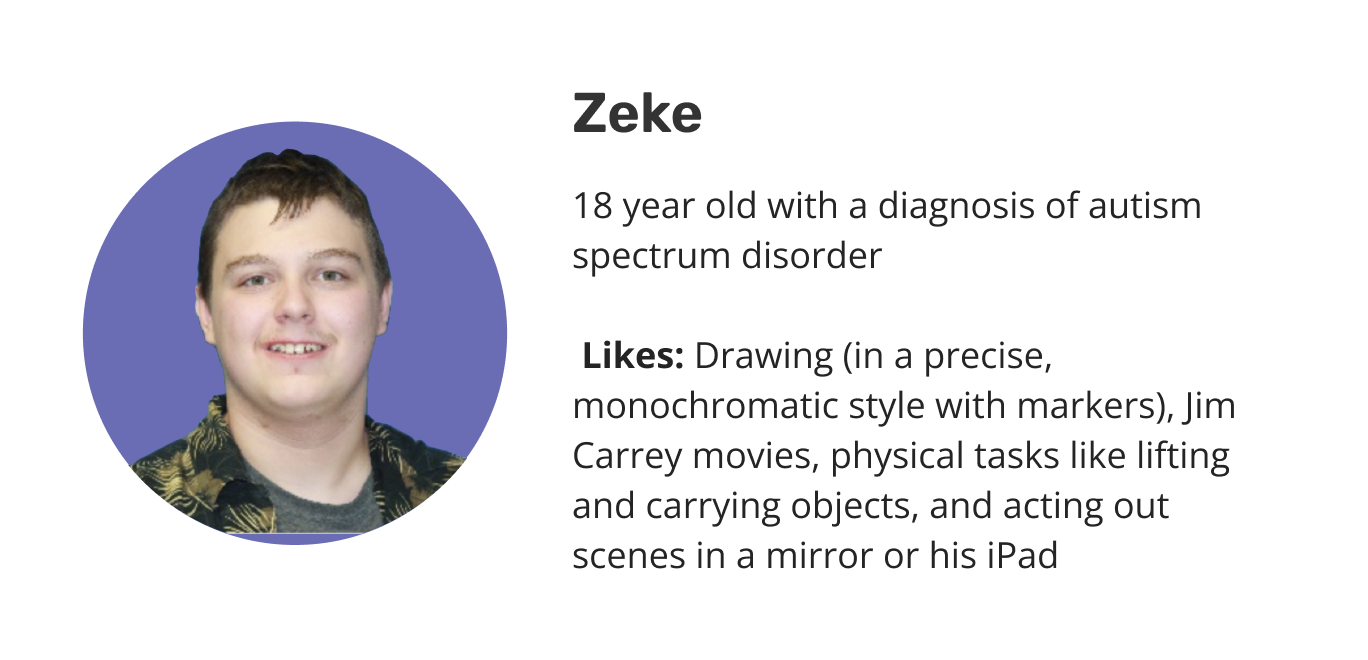
GETTING TO KNOW TYLER AND ZEKE
Creativity and art are a shared interest
Both Tyler and Zeke have expressive verbal language skills, but not functional speech. Since we couldn’t interview them about what brings them delight, we visited HARP and hung out during their free time.
We began our observations with some key questions. What are their favorite activities? How do they express happiness/delight? Do they have common interests? Are they friends with each other?
We found that, above all, Tyler and Zeke both love to create! While they have very different styles, making art calms and captivates them. We saw that they experience art as a very personal experience, preferring to create independently from each other. This led us to a key question - how could we create one experience or product for such different artists?

HOW MIGHT WE?
How might we bring delight to Tyler and Zeke while allowing them to be creative in their own unique ways?
PROTOTYPES
#1
Gamifying drawing
We wanted to see how Tyler and Zeke would respond to a more structured creative process by turning drawing into a game. To test the concept, we made a simple color-coded game with drawing prompts.
Results: Turns out, making art is a more individual experience for Tyler and Zeke. Tyler had no interest, and Zeke completed some of the prompts but went back to his own drawings as soon as possible. This prototype also required a lot of effort from Jessica, and we wanted our product to be something that Tyler and Zeke could enjoy by themselves if they wanted to.
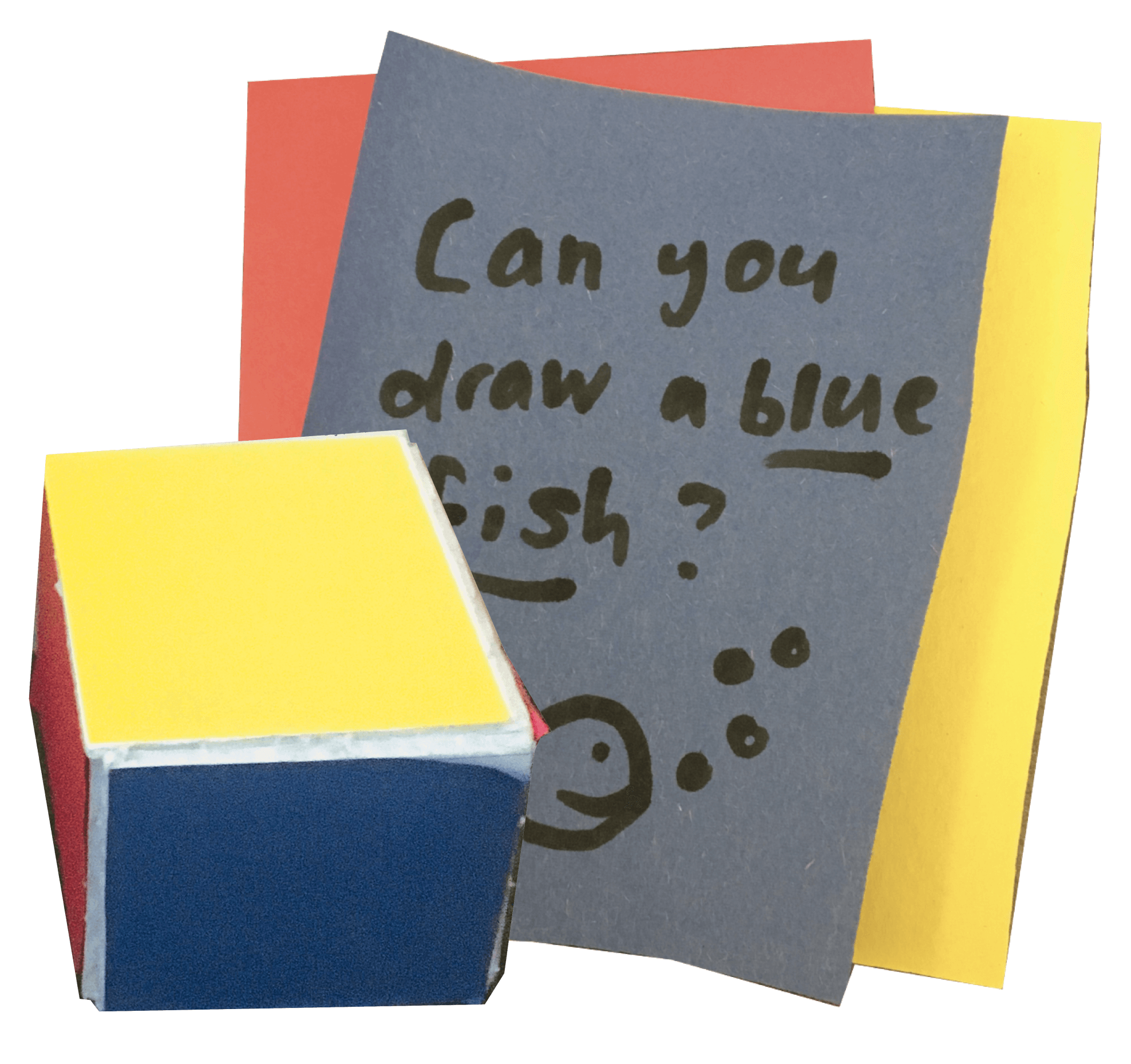
#2
Introducing physicality
Both Zeke and Tyler find physical stimulation (lifting, carrying weights, etc.) calming and engaging. What if we could incorporate that into their art?
I made these prototypes of “giant art supplies” to introduce a different range of motion into drawing and crafting. By drawing with giant markers on whiteboards or large sheets of paper, they could use big motions and move around. Tyler loves pipe cleaners, so I made some supersized versions as well.
Results: These didn’t get much interest from either Tyler or Zeke. While they used them when prompted, we didn’t see the delight factor we were looking for.

#3
Providing creative inspiration
What if we could delight Tyler and Zeke with new, silly things to draw? We incorporated some of their favorite characters into these mix and match blocks, which can be rearranged into new combinations. We hoped that these could inspire their creative process and generate some laughs.
We made two versions, stackable blocks and a fun, spinnable “kebab” with a mix of hand-drawn and realistic characters.
Results: The stacking blocks were Tyler’s favorite prototype! He didn’t seem too interested in drawing the characters, but he had fun acting out scenes with them and even drew directly on the blocks to add his own details. Zeke liked spinning the blocks, but it didn’t hold his attention for long.
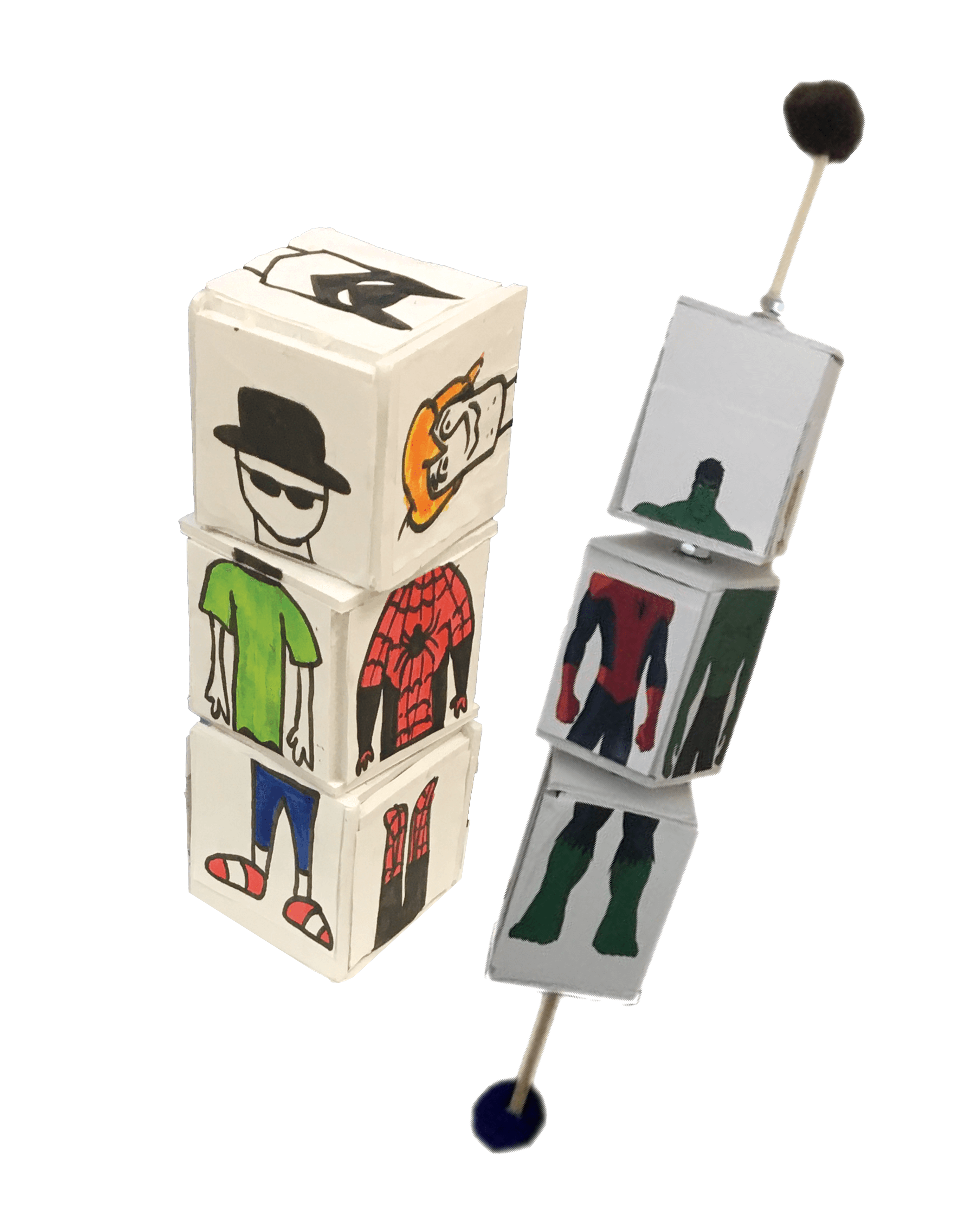
TESTING TAKEAWAYS
We need to let Tyler and Zeke create on their own terms
The biggest bright spot was Tyler’s interest in the mix and match blocks, which really helped his imagination run wild. We wanted to capture that energy in our final product, but push it even further.
But in general we realized we were trying to impose our own ideas of fun and control an experience that Tyler and Zeke already find delightful. Zeke in particular was happiest when left to draw whatever and however he wanted, and some of our prototypes were interrupting that. Rather than trying to restructure their drawing time, we started to ask ourselves how we could enhance it...
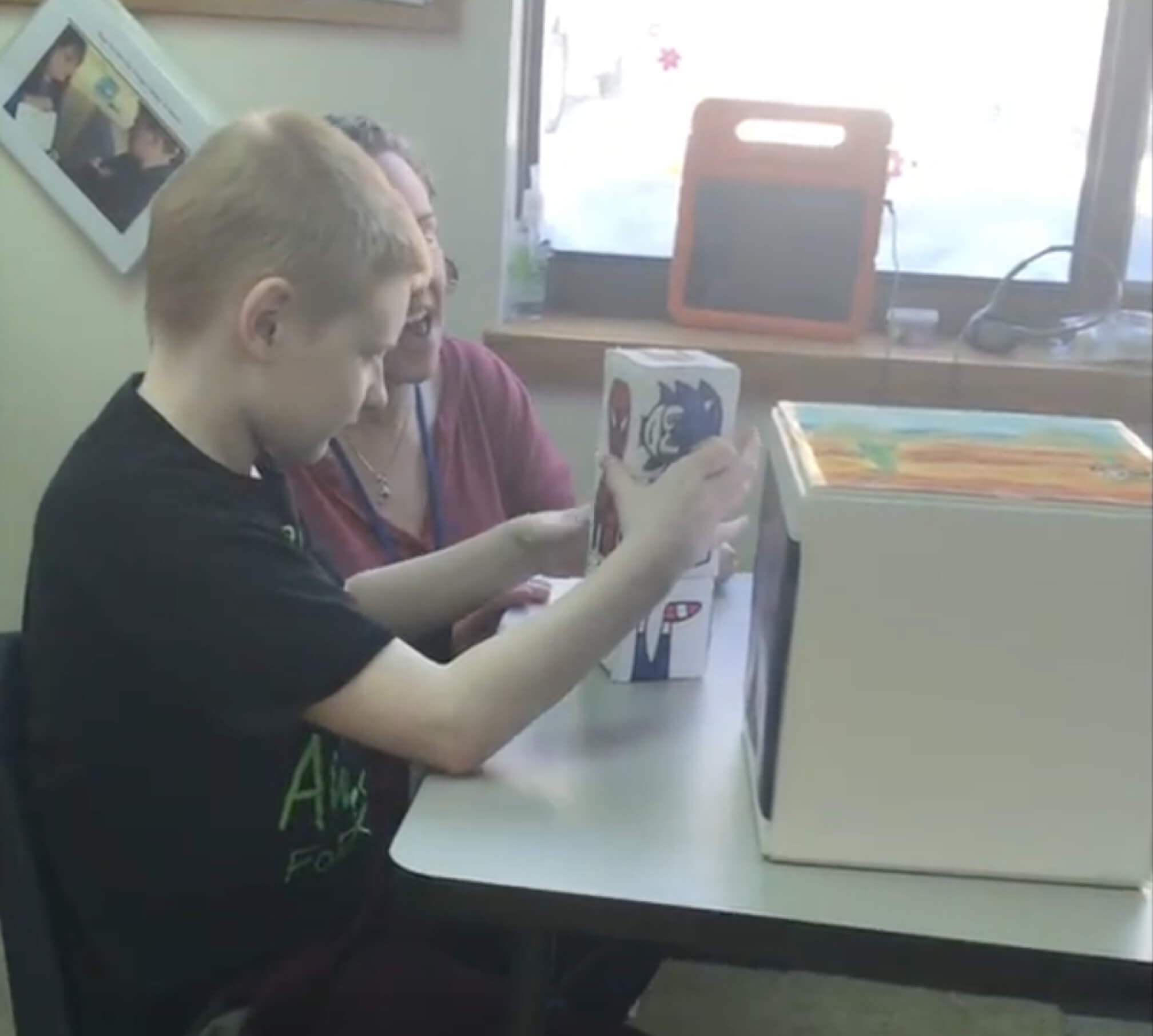
FINAL SOLUTION
A trifold provides private space for creativity
We stopped trying to change what/how Tyler and Zeke draw, and pivoted to enhancing the space around them. This acrylic trifold was designed to create a private area around Tyler and Zeke while they sit and draw, keeping out distractions and even providing erasable surfaces to draw on. The trifold was constructed from scratch and has sanded, kid-safe edges as well as base stabilizers.

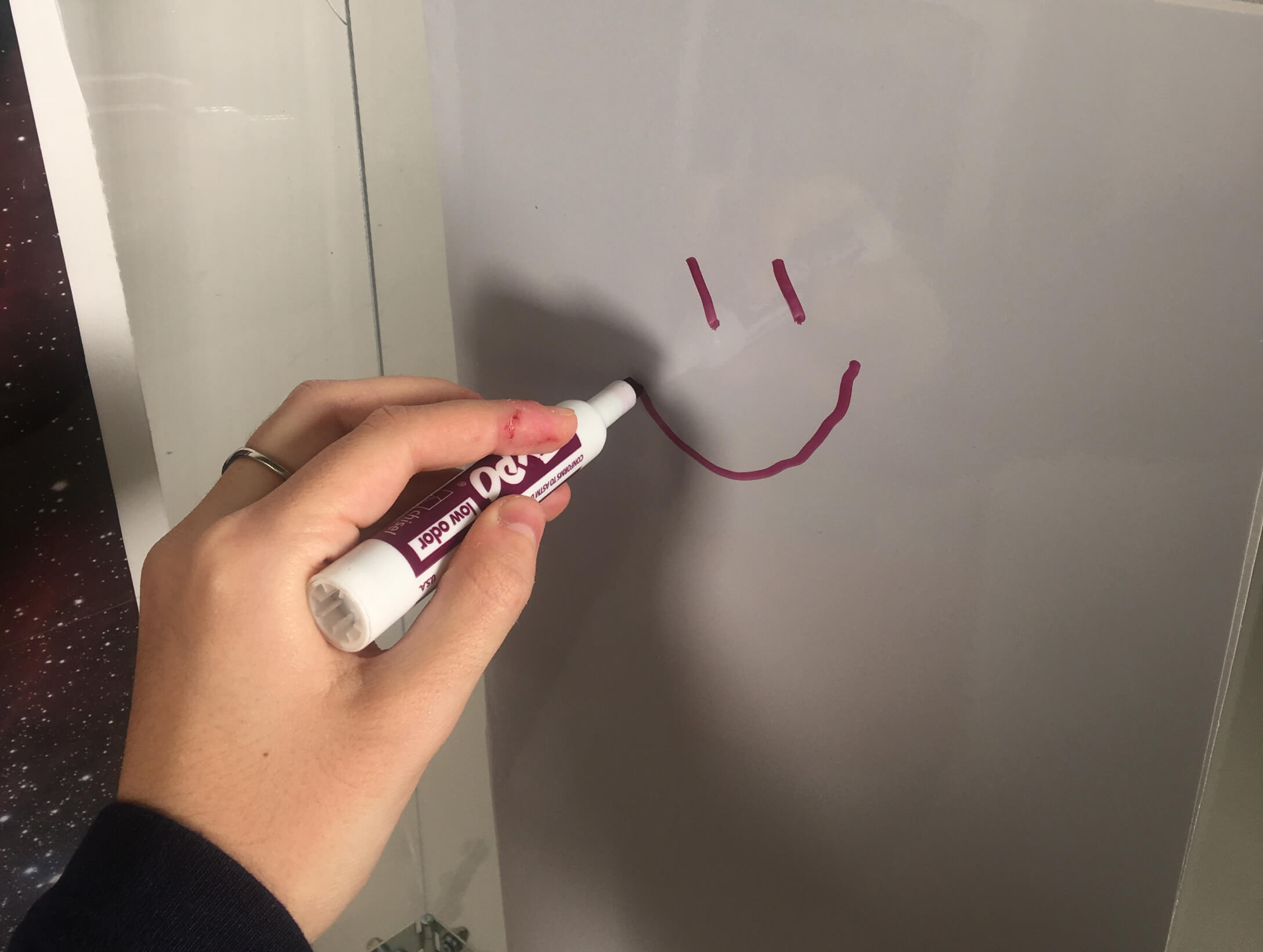
Lots of scenes for inspiration
Velcro enables the panels to be swapped to create new backdrops. The picture panels (cities, space, etc.) were targeted towards Tyler, since he likes acting out imaginary scenes. Zeke loves making faces in the mirror, and so we included mirror panels for his trifold.
Every surface is laminated and erasable, plus we included some blank whiteboard panels for drawing.
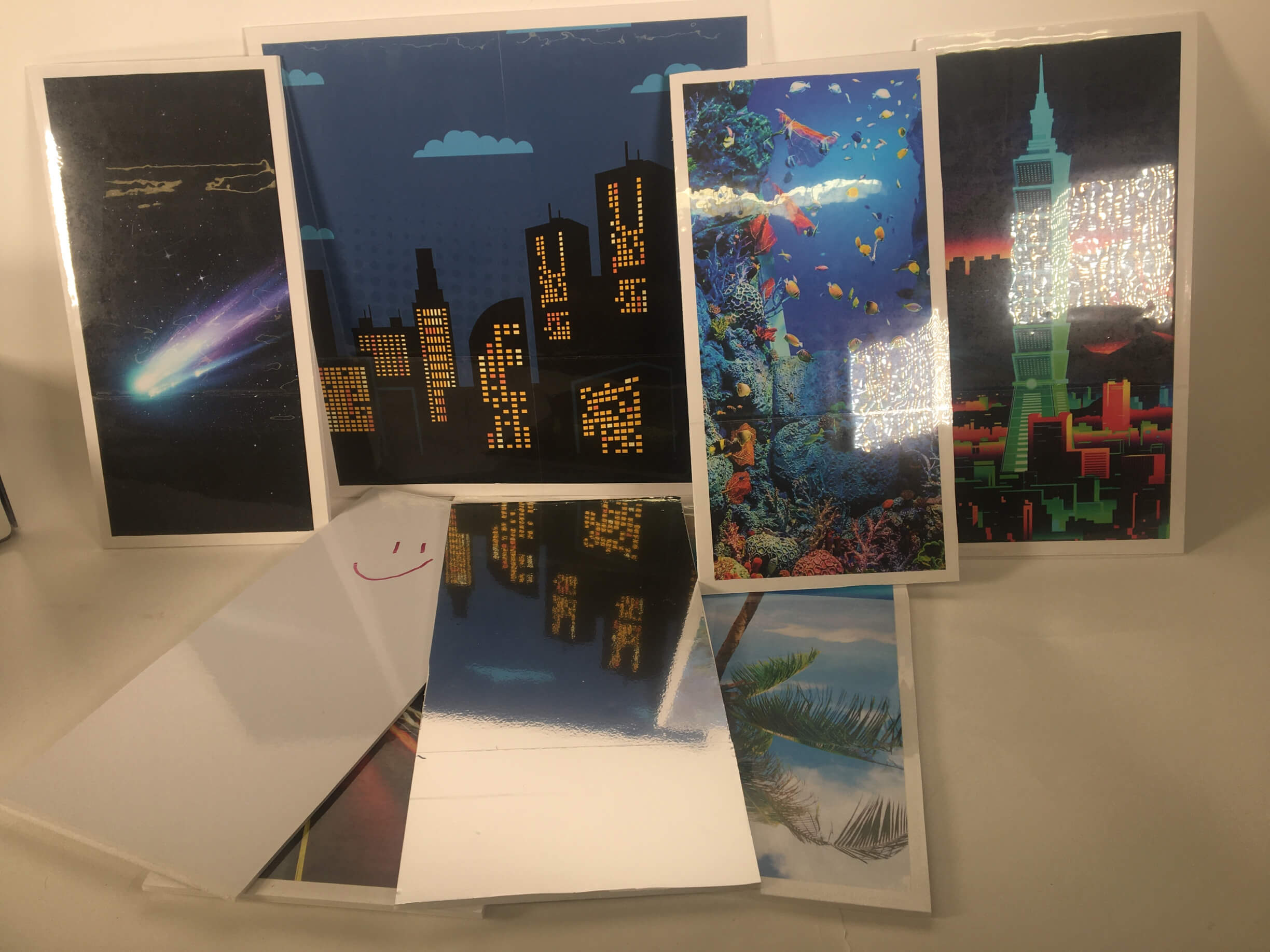

Mix and match blocks 2.0
I worked on improving the old prototype and created this set of six blocks with sanded acrylic panels on each face. Each panel is attached with Velcro and they can be completely rearranged.
The panels include a mixture of characters (featuring illustrations by Maxine) as well as whiteboard and mirror surfaces.
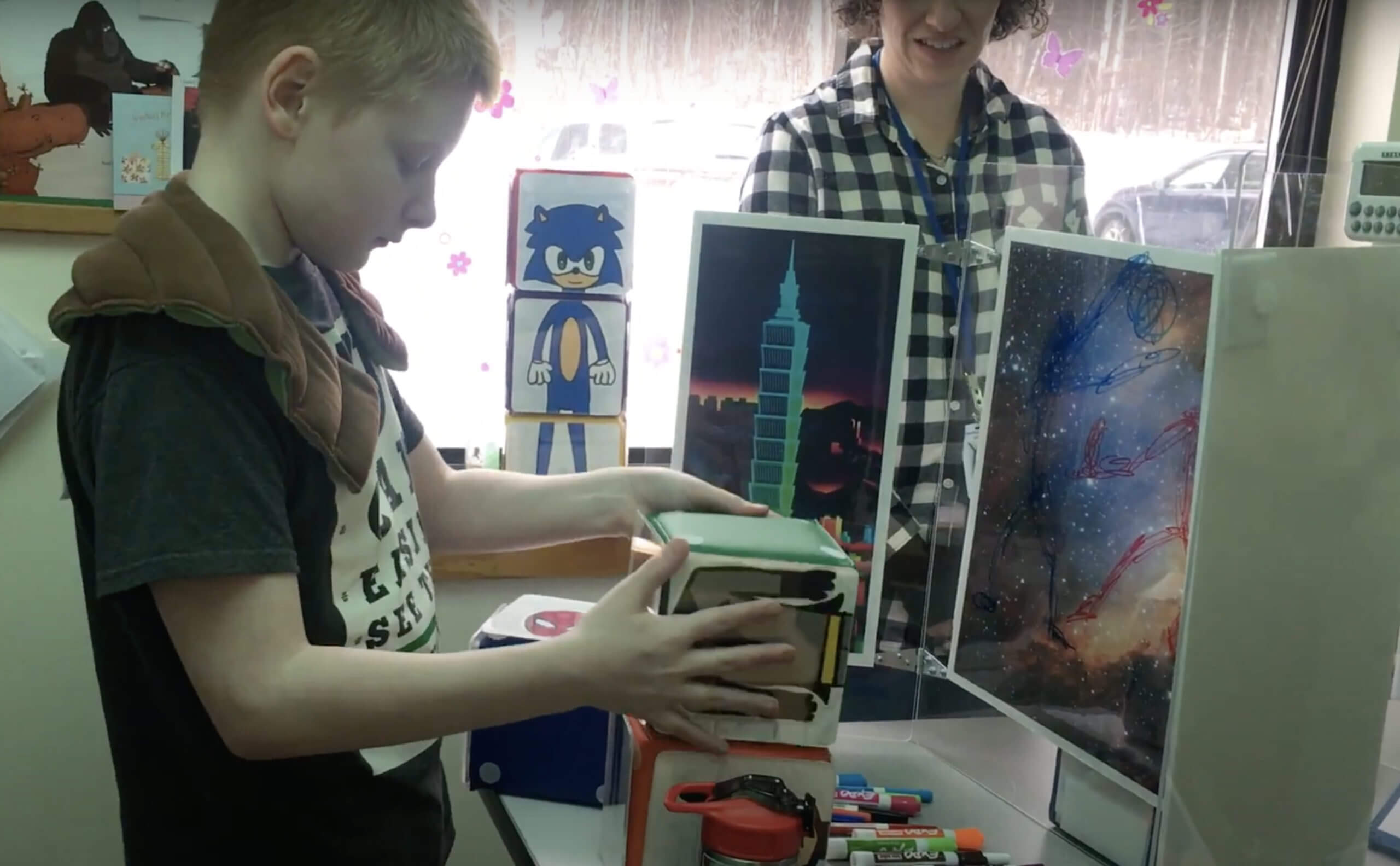
OUTCOME
Delivering delight
We tried to create the perfect environment for relaxed creativity with personalized art kits and separate work stations for Tyler and Zeke.
Tyler took to the Imagination Station immediately, playing with the blocks, drawing on everything, and acting out scenes with his action figures. He even used the station in ways we didn’t expect, showing us that we had succeeded in fostering creativity without being too controlling. We were excited to hear that Tyler has been requesting to use it during his Recreation periods!
Unfortunately, Zeke was sick the day of our visit and couldn’t play for very long. But Jessica followed up to say that he has also been enjoying the station in his free time!
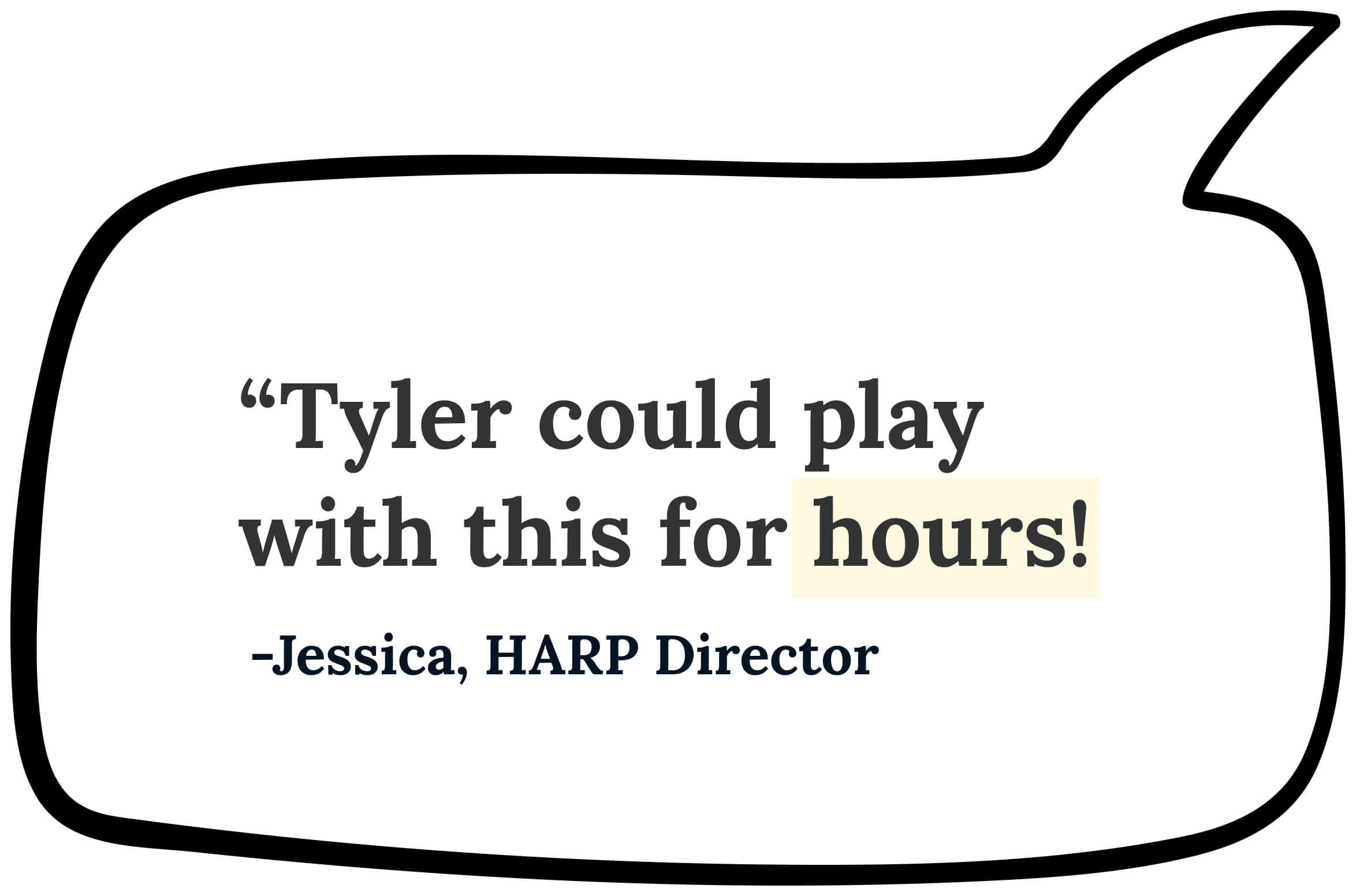
NEXT STEPS & TAKEAWAYS
#1
Learnings for future iterations
There’s a few things we would improve if we had the time. First, the blocks should be smaller - Tyler liked stacking them and picking up the character to play with it, but three blocks were too big to fit comfortably in his hands. And while the trifold is sturdy enough to feel safe, it still moved around when drawn on. Some sort of anchoring system or better materials could benefit the users.
#2
Why so serious?
I learned so much in this class about how elements of delight can inspire and motivate users. Designing for delight doesn’t have to be an afterthought, and is actually what sets many successful products apart from the rest. Seeing design in this new light is helping me have more fun with it!
#3
Never assume what will be delightful
Delight is so personal, and this experience really showed us that we couldn’t rely on assumptions about what delights neurotypical individuals. We also couldn’t ask Tyler and Zeke to be delighted by the same things. Letting them guide the experience was so important.
#4
Safety and accessibility is the top priority
Creating a physical product for autistic children meant that I had to keep affordance and safety in mind at all times. Are these corners too sharp? Will these instructions be overwhelming? Are mirrors overstimulating? I realized that I should always be asking these questions in order to make the things I design accessible and safe.
Special thanks to Tyler, Zeke, and Jessica for welcoming us at HARP!

NCSECU StorefrontUX/UI • Client work
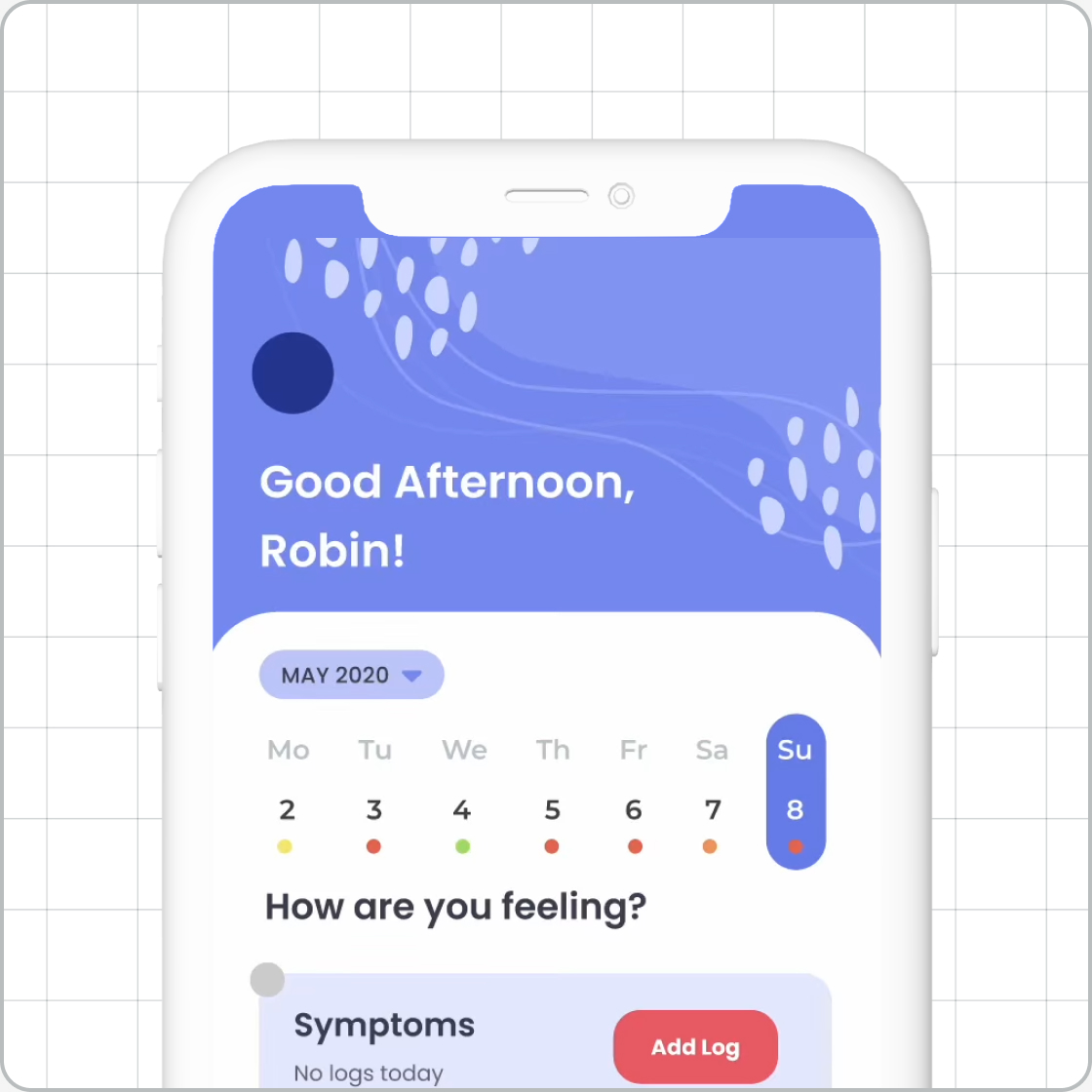
FlourishUX/UI • Student work

TD WealthUX/UI • Client work
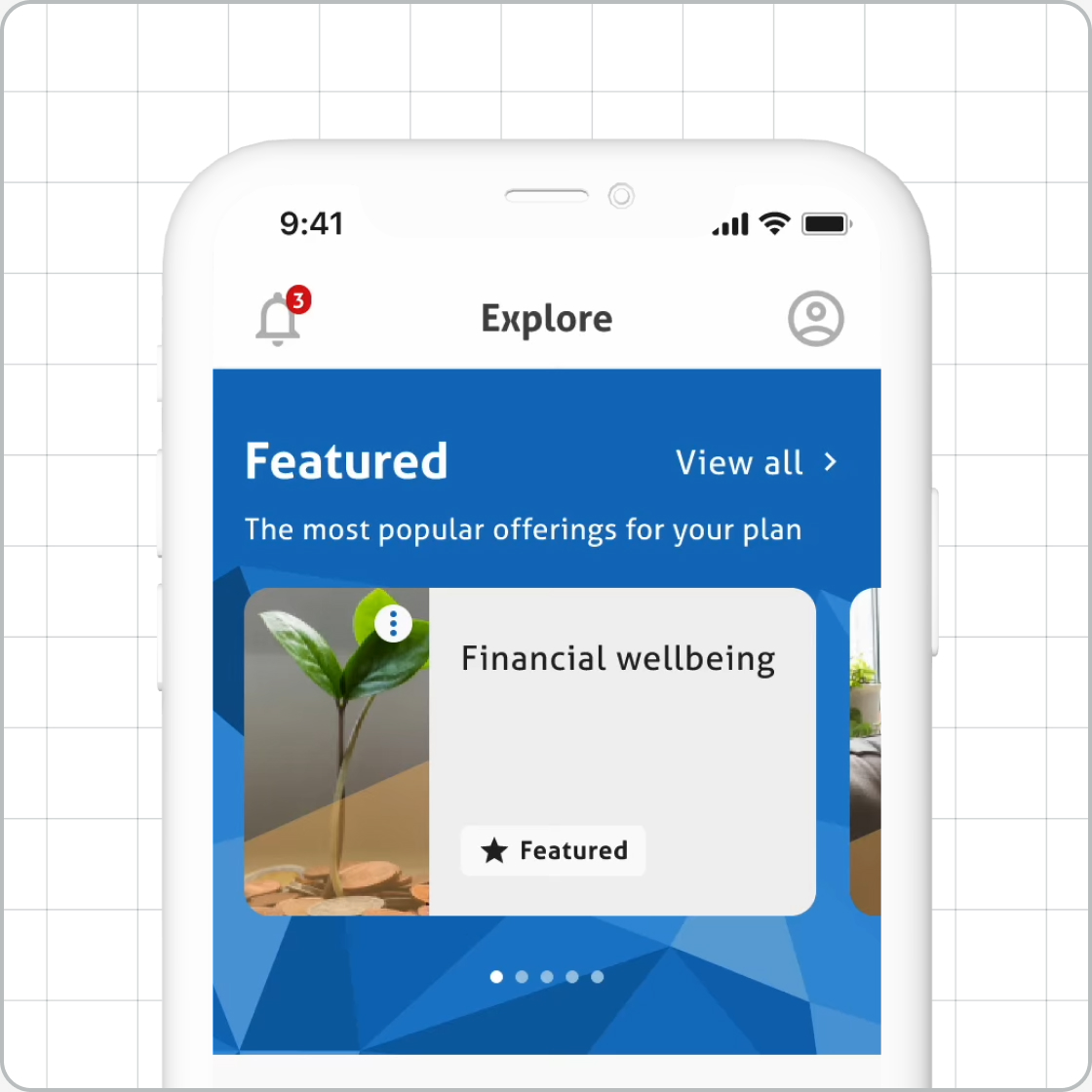
Magellan EAP AppUX/UI • Client work
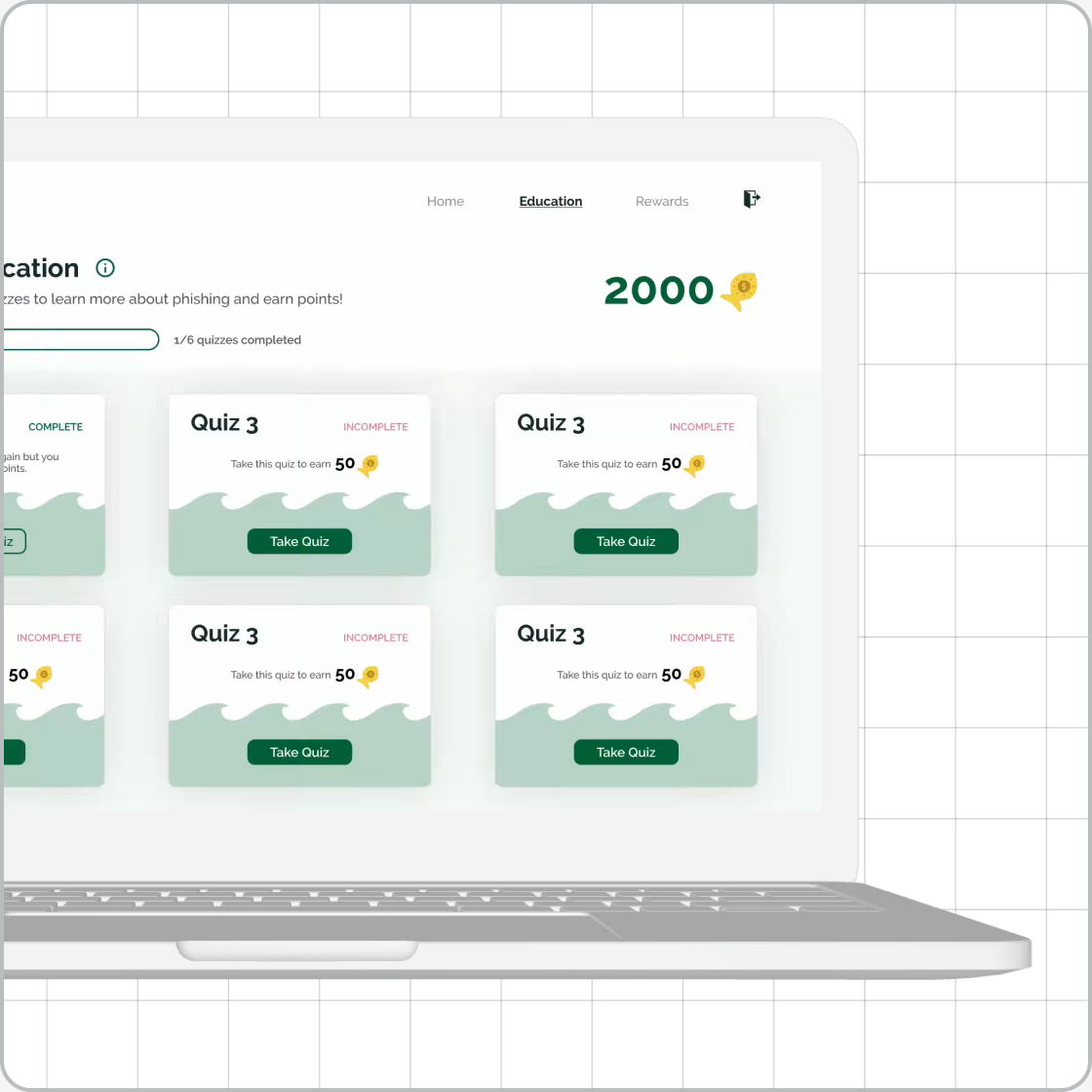
GoPhishUX/UI • Student work
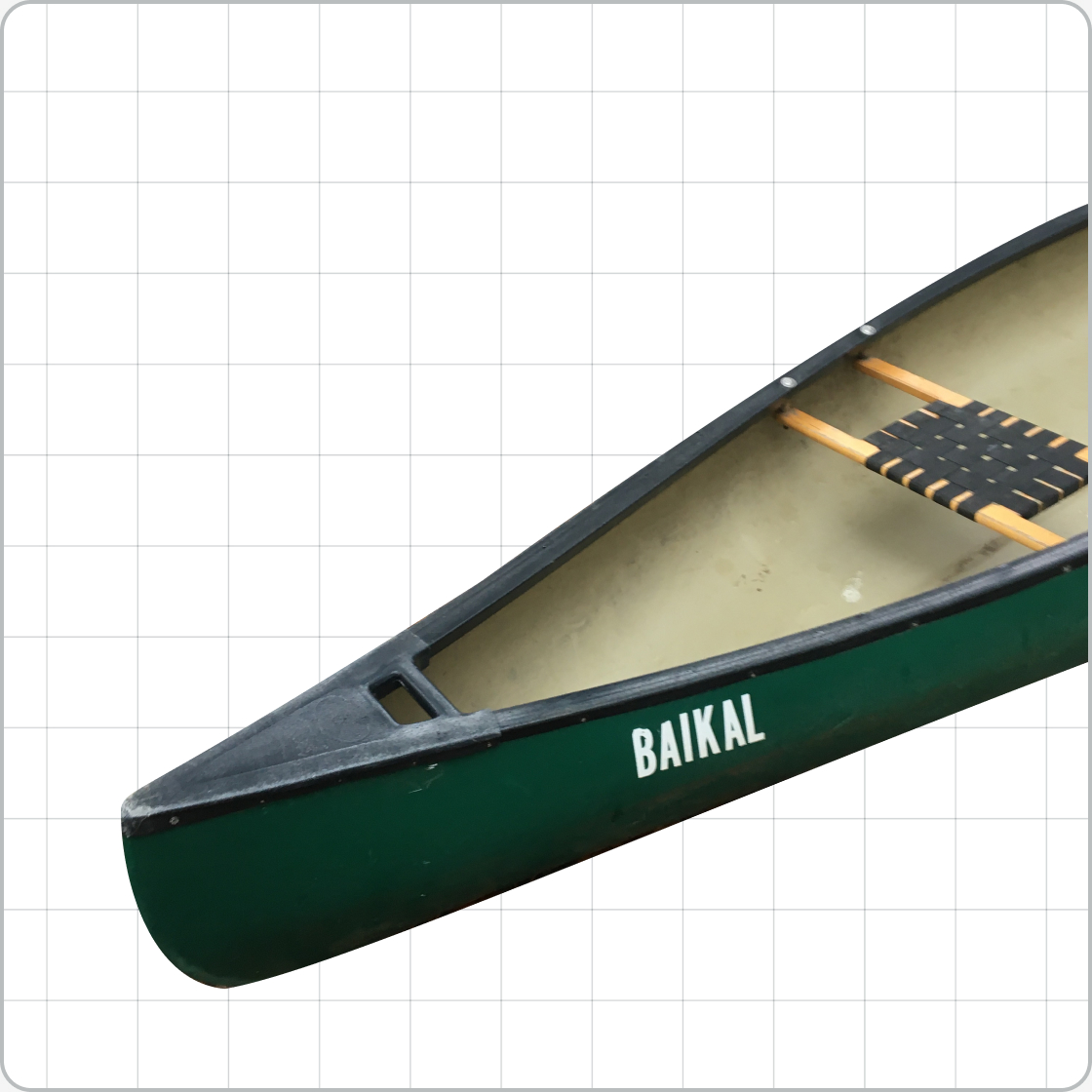
RescanoeProduct design • Student work
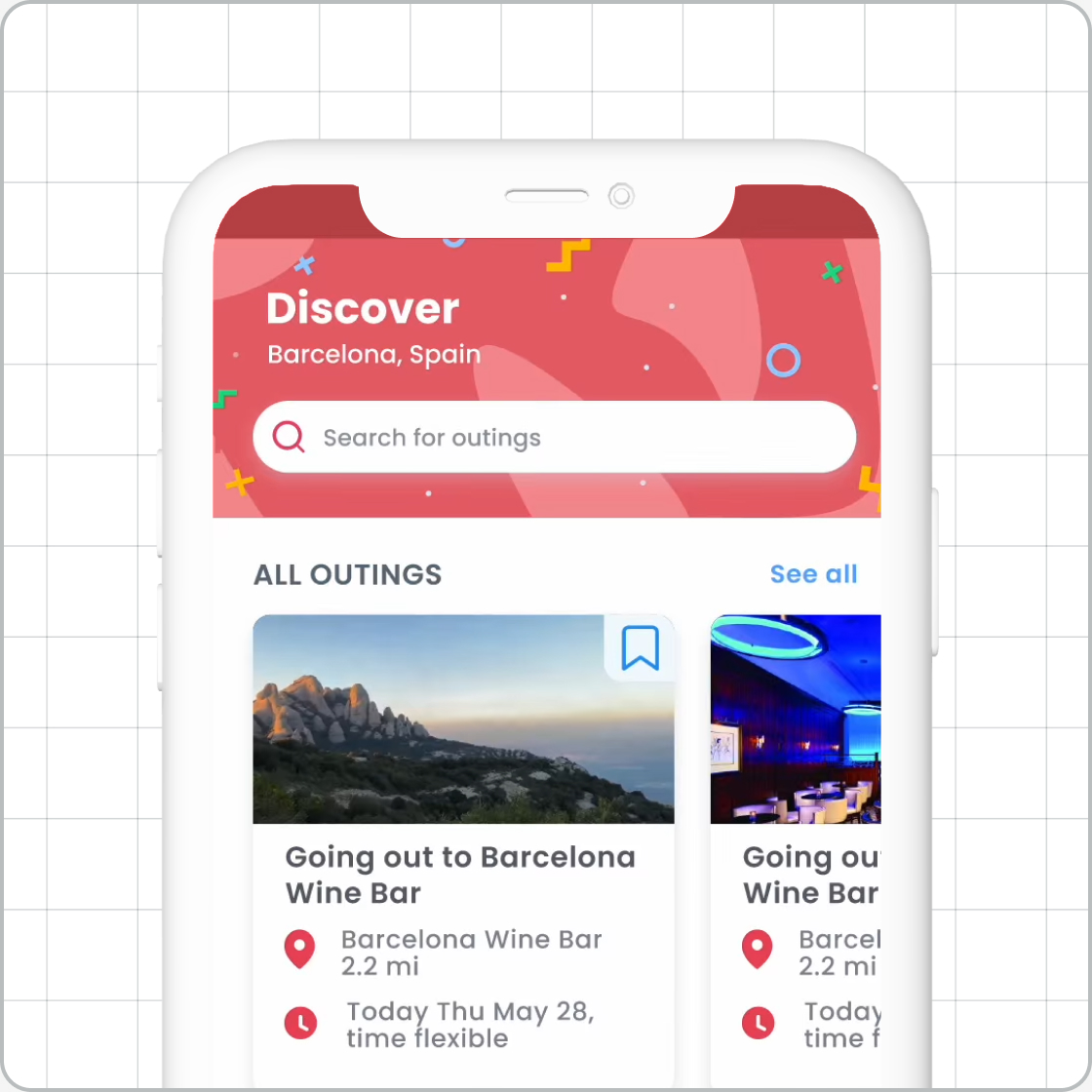
UnioUX/UI • Student work
